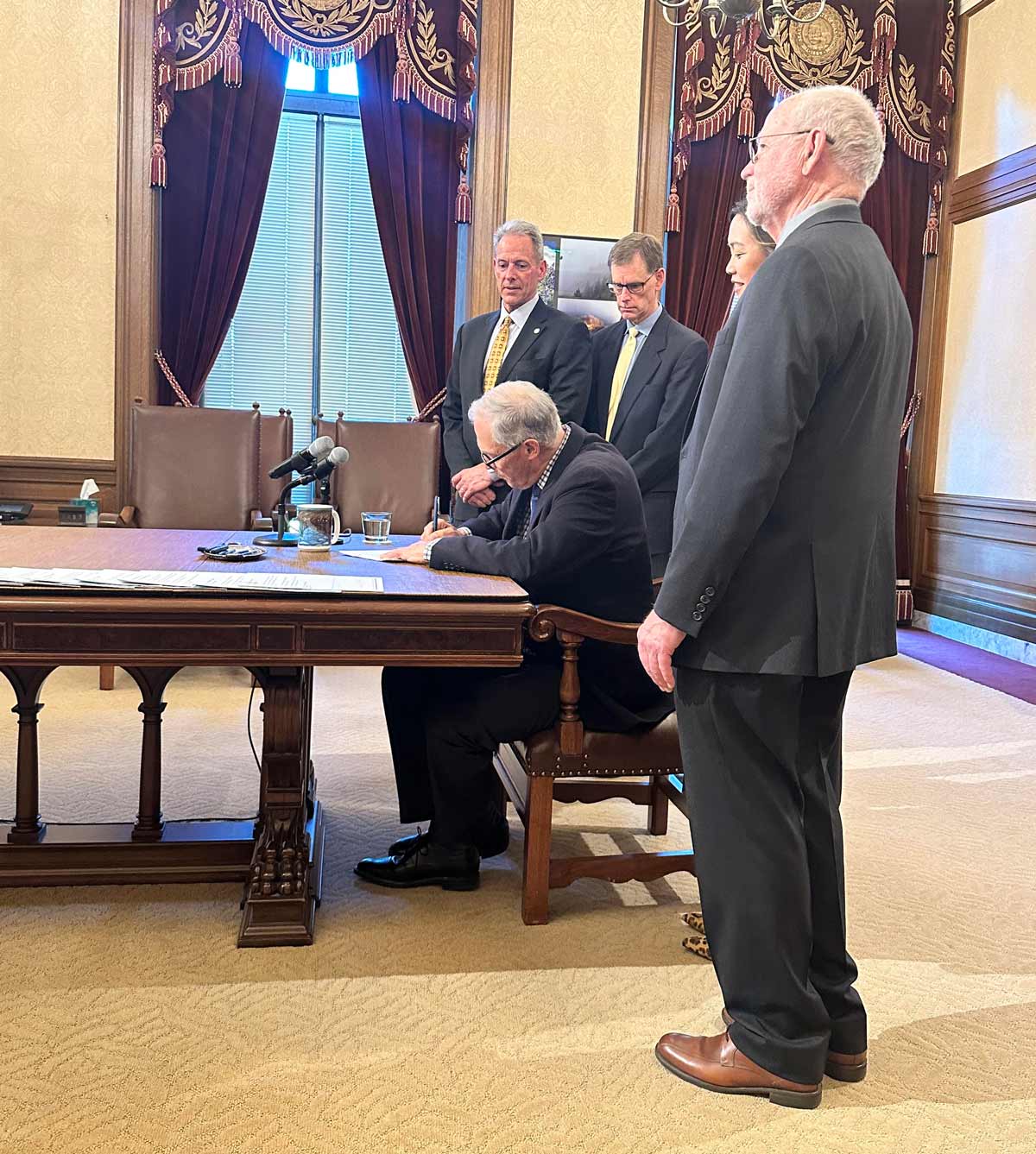 |
Washington Governor Jay Inslee signed SSB 5389 into law, effectively expanding the state's optometric scope of practice for the first time since 2003. Photo: Optometric Physicians of Washington. Click image to enlarge. |
Editor’s Note: As part of our “Year in Review” retrospective, we’ve selected the top 30 news stories of the year and are re-sharing them as we close out 2023. Follow along as we count down to number 1!
This story was originally published May 10, 2023.
No. 30 biggest news story of 2023:
For the first time in two decades, the scope of practice in Washington state has finally been updated. Yesterday, May 9, Governor Jay Inslee signed SSB 5389, otherwise known as The Access to Eyecare Act, which now authorizes Washington optometrists with the proper training to perform the following procedures:
- Incision and excision of chalazion
- Injections (subconjunctival, subcutaneous and intramuscular (epinephrine))
- Eyelid surgery (excluding cosmetic surgery or those requiring the use of general anesthesia)
- Use of topical and injectable anesthesia
- Prescribing of oral steroids
The win marks the first for US optometrists in 2023, with the last scope expansion taking place in Colorado almost a year ago in June 2022. Several other states also still have scope bills in play this legislative session.
“Today’s bill signing completes a years-long effort by the profession to update our state’s scope of practice laws so that they more closely align with the standard of optometric care and the laws in other states,” says the president of the Optometric Physicians of Washington (OPW), Michael Sirott, OD, in a press release. “Optometrists are front-line health care workers who often serve as primary care providers, especially in rural areas of our state. This bill will allow me and my colleagues to more fully treat our patients and ensure they receive access to safe, high-quality care without incurring additional delays, travel costs or expenses to address their eyecare needs,” Dr. Sirott adds.
Prior to the governor’s signature, the legislation had received strong bipartisan support in both the Senate and House, which passed SSB 5389 with votes of 46-2 and 81-15, respectively. However, the legislative process did have its bumps along the way. While the original bill had proposed that optometrists be allowed to perform certain laser procedures and suturing, the final document removed such language due to amendments that were introduced and negotiated in both the Senate and House. Nonetheless, the signing of SSB 5389 is a huge victory for optometrists in and out of the state, and it will serve as a precedent for Washington’s future legal fight to add laser privileges to the practice scope.
In the OPW press release, Dr. Sirott accredits the win to the advocacy efforts of OPW members, as well as the efforts and leadership of several members of the Senate—Senators Annette Cleveland and Ann Rivers—and the House—Representatives Marcus Riccelli and Joe Schmick. “We also want to thank Governor Inslee, whose signature today is the last step in the process to ensure patients in Washington will have more choices in the delivery of their eye care,” says Dr. Sirott.
In order for Washington optometrists to take advantage of the new privileges, the state’s Board of Optometry must first complete its rulemaking process to decide on the training and certification requirements and implementation strategy, a process that could take 18 months or longer to complete, according to the OPW.

